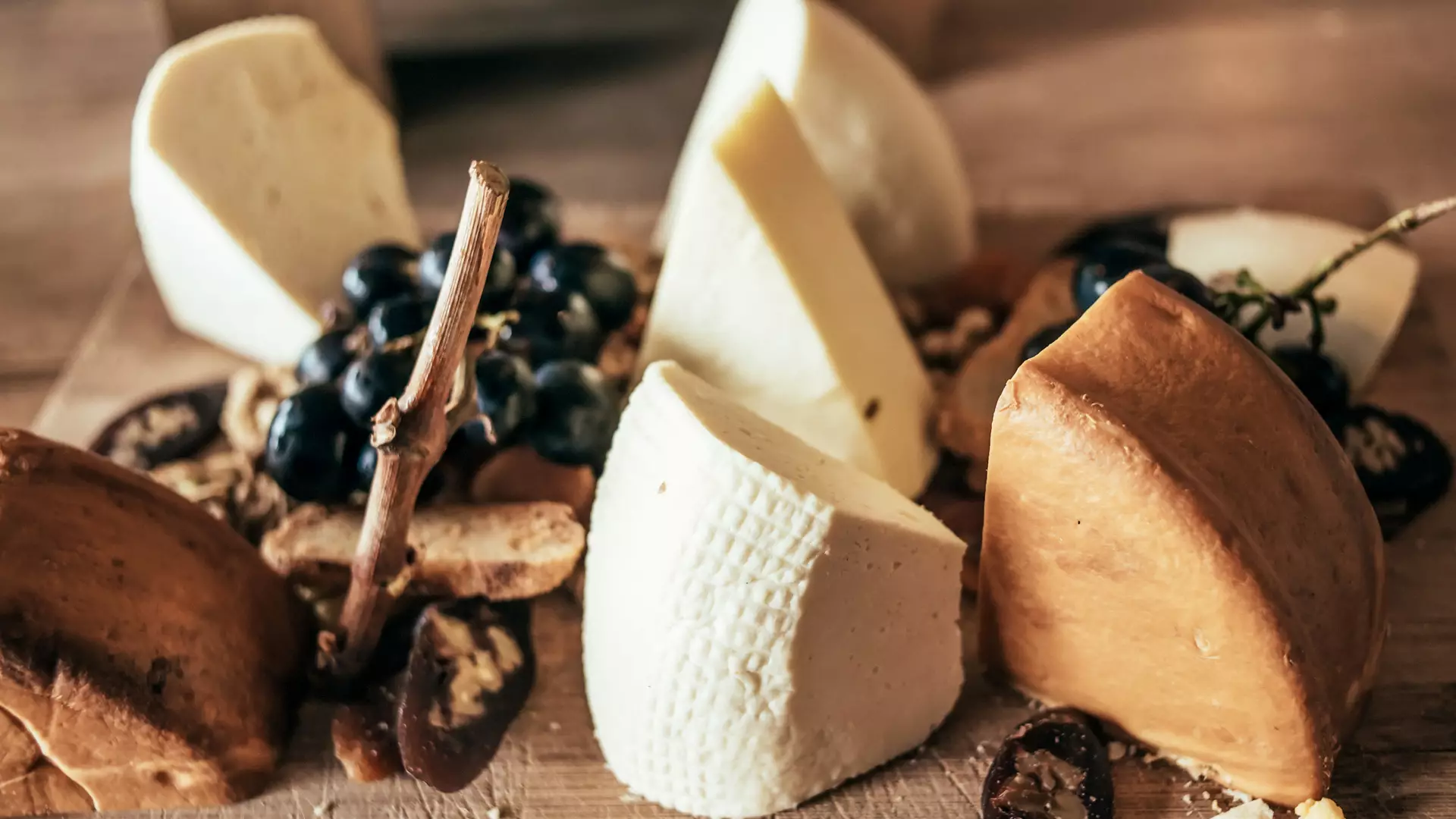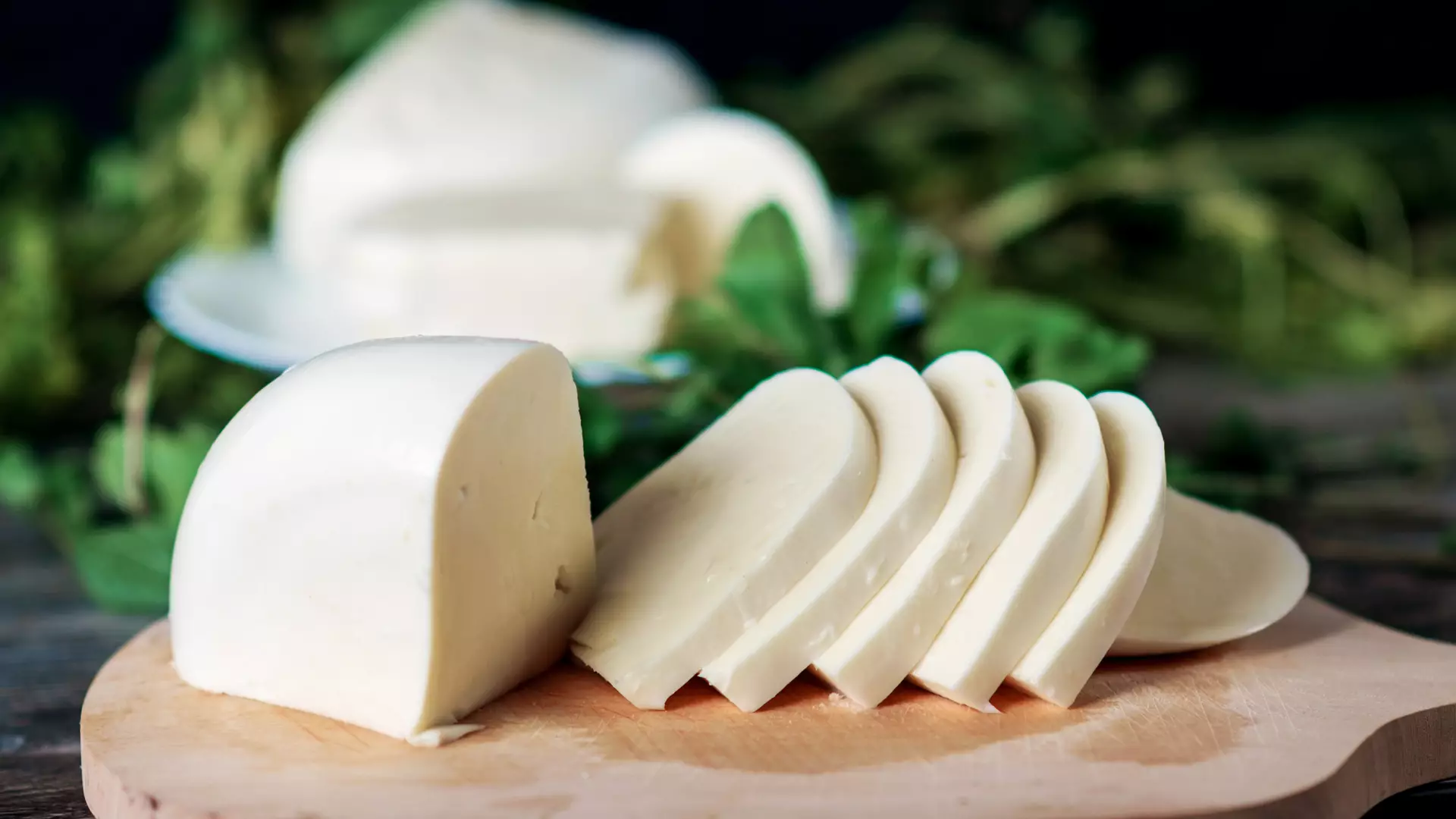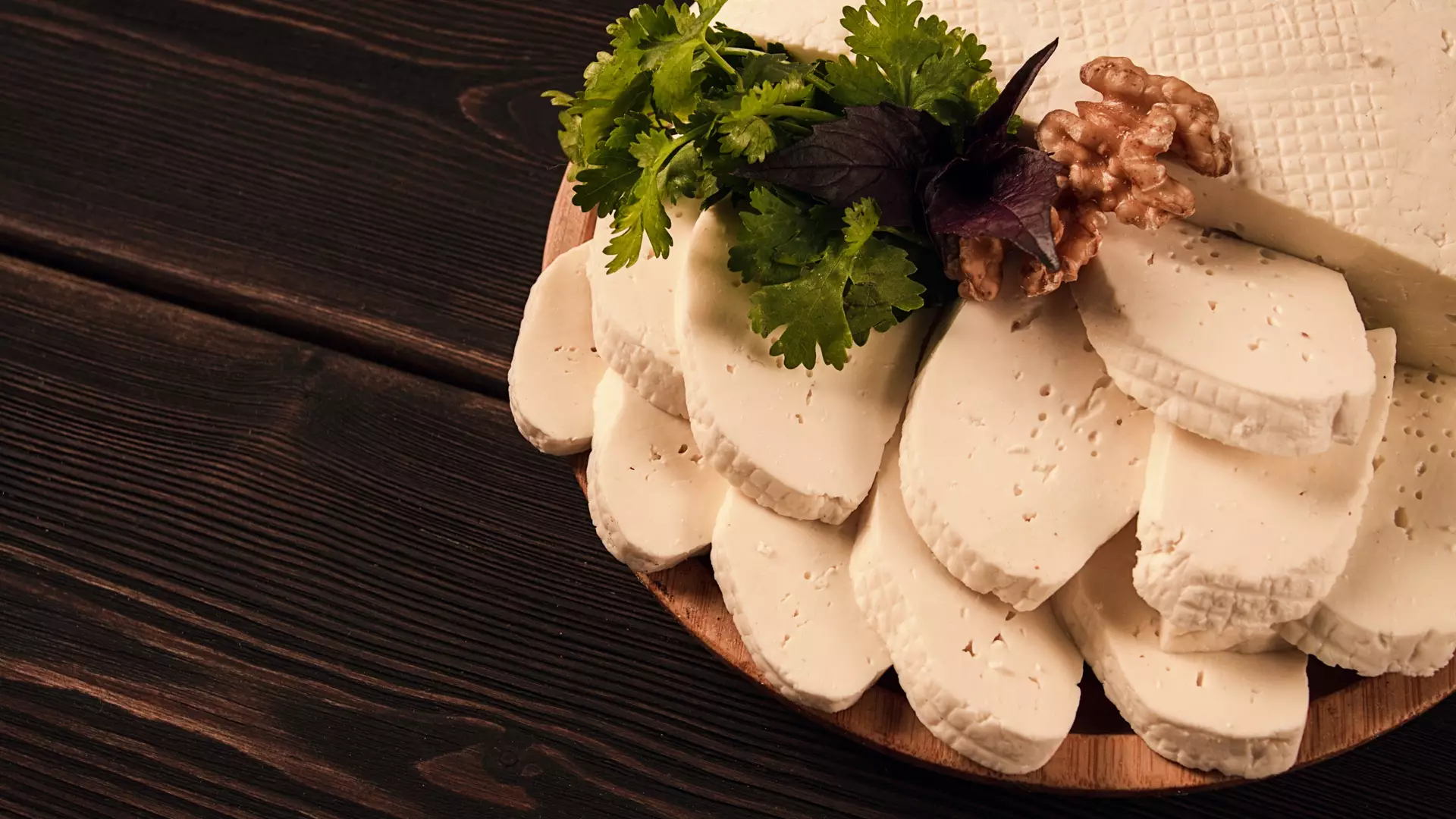Types of Georgian Cheese
Cheese in Georgian Dishes
Cheese is a fundamental part of the everyday menu in Georgia. It is always present at every table, reflected in the idiomatic Georgian saying: “Cheese and bread, a kind heart.”
There are quite a few cheese recipes in Georgian cuisine: cheese kharcho, kvalam kveri, ghomi and cheese, gebzhalia, kneaded cheese, elarji, cheese salads, mchadi and cheese, or just cheese and bread. The most important crown jewel of Georgian cuisine, khachapuri, is made only with natural Georgian cheese.
Cheese production is a sacred practice in Georgia. It is a ritual most often performed at home by women (the production of braided cheese is an amazing sight to see), but herdsmen on the plains are also masters of this craft. A cheese production site requires the utmost sterilization and order.
Rennet

Rennet is the special liquid or powder necessary to make high-quality cheese, however, it is called by different names in different regions. In the mountains, it is called cheese tsamala, and in Kartli and Kakheti it is called machiki, the mother of cheese, or dvrita. It is usually animal rennet from the stomach of a cow, calf, pig, lamb, or goat.
There are various folk methods for producing rennet. One method is to remove the stomach of freshly-slaughtered livestock, scoop out the interior, rinse well, scrub it with salt, and hang it to dry. Then it would be placed into a jar and added with an egg, the shell of a cornel, wheat, a small amount of alum, and salt, then be left to set. Rennet can be used after 10-15 days.
Another method is to liberally sprinkle the dried stomach with salt and strong vodka or vinegar and left alone for four to five weeks.
Seasonal dvrita is when the rinsed stomach is sprinkled with salt and hung in the air for five to six days. Then, snip the half-dried stomach in various places, flatten it, and hang it to dry for another two to three days. Put the dried stomach into a jar with two or three bunches of unripe grapes or unripe plums, boil and press cold whey to pour on top, and add clean ham and haunch bones. A week later, the mother of cheeses would be ready.
Fresh rennet is stronger, so a low quantity is needed. But, since it loses that strength as it ages, more is needed as time goes on. Now, you can buy factory mixes where a few drops in moderation are necessary to curdle cheese. If you use too much rennet, the cheese will have a strange taste and smell. Traditional cheese producers know the value of real cheese and they’ll often remind you at farmer’s markets by saying, “the cheese is made with machiki, and its taste is completely different.”
Making natural farmer’s cheese is a time-intensive process, and requires good livestock, pasture, environment, and human resources.
How to Keep Cheese
There is more than one way to keep cheese. Our ancestors kept cheese in clay pitchers, wooden casks, or the skins of sheep, goats, and calves. Nowadays, it is placed in glass jars with specially prepared brine at home. If the cheese has good brine, then neither its color, flavor, nor its structure will change.
The brine is made as follows: Three teacups of rock salt (only rock salt is good for the brine), one cup of sugar, and one cup of vinegar are dissolved in thirteen cups of water that has been boiled and cooled. This brine will preserve cheese for a whole year.
In Samegrelo brine was made with whey and matsoni instead of water. Cheese would remain softer and keep its original taste in brine.
You can also keep cheese in a jar. Cut the cheese into four to six pieces, place it into the jars, and pour in lukewarm brine, then close it with a plastic lid. Remove the mold from the top from time to time and add more brine. If you want it to be very strong and saltier, you can change the brine every month.
Cheese can be kept in the freezer in a special plastic bag. After thawing, the frozen cheese will be the same as it was before it was frozen. Don’t thaw too much because freezing it again will change the flavor.
Cheese is also kept in vinegar essence. Put 14 tablespoons of salt and three tablespoons of sugar into three liters of water and boil it. Then stop boiling it and add three tablespoons of vinegar. Pour it onto the cheese while it is hot and keep it for up to one year. The product will not spoil nor will it become too salty.
Narchvi Cheese
Narchvi is a Svan cheese made from natural cow milk and means “what has been collected” in Svan. The cheese bears this name because it is prepared from especially collected cheese over two days in August and is saved for winter.
The cheese is crumbled, a moderate amount of salt is added, and it is kneaded until it becomes uniform. After that, it is diligently stuffed into a box made of thin, leafy, wooden boards, covered over with cheesecloth, pressed down with a weight, and left in a dark place. The Narchvi cheese ripens during the two-month process and ages until Christmas.
Tushetian Guda Cheese
Tushetian guda cheese is cheese made from fresh, whole milk from a sheep, or often a mix of sheep and cow, which is ripened in a bag (“guda” in Georgian) made from sheep skin (with the sheared hair on the inside).
Four or five cheeses are put into the bag, with salt layered between them, and then the bag is tied up, brought to a cheese room, and covered with a towel for another two days. To make sure that the salt is absorbed evenly, the cheese is turned over multiple times a day for several days, so its shape also changes and ripens in the bag for 60 days.
Dambalkhacho
Dambalkhacho is a type of blue cheese that has been made in the mountains since before anyone can remember. Nowhere else can you see a product like this, made in Tianeti and Pshavi, Georgia. Dambalkhacho, moldy on the outside, but soft and golden on the inside, is eaten both dry and fried in a pan with copious clarified butter. It is similar to the world-famous fondue.
Prepared cottage cheese is kneaded with salt, rounded like a pastry, and left to dry in a special container called a dzobani, which is kept out of the sun. The dzobani may also be hung up over smoke for a short time. Using this method, the cottage cheese will dry in about seven to ten days. Then it is rinsed in whey and left to dry for a short time again. The dried cottage cheese is then put into a clay pot or a kvevri and aged.
Sulguni

The first people to make sulguni were the Mingrelians and Svans. This cheese is made from fresh milk from a cow or a buffalo. For sulguni, knead fresh cheese and cut it into thin strips, and placed it into hot water. After strongly kneading it, they wrap it around their hands, knead it again, flatten it, put it back into boiling milk or water, and then start twisting and pulling it again, finally forming it into balls.
The cheese comes out in layers, the determining quality factor. They dip it fully into ice-cold saltwater, salt it, and put it into a wooden apshara (a large bowl). If it is meant to be kept for a long time, then they will put a hole into it so that it can be hung onto a rope, or they will put it into salt water with matsoni. Smoking sulguni is a separate technique in Samegrelo where it’s hung onto a high beam and purki – smoke – is blown onto it from far away. It is smoked for at least two months.
Imeretian Cheese

Imeretian cheese is part of the raw cheese group, is made by hand, and is also called “hand” cheese. Rennet, or as it is called there, the mother of cheese, is put into fresh milk to curdle and left over a low flame. Once the milk starts to curdle, it is mixed by hand. The product should be squeezed moderately, made into balls, and put into a clay or wooden bowl.
To take up a good amount of salt and ripen well, the cheese is salted with rock salt. It is absorbed somewhat into the cheese and promotes the development of holes. Finally, the cheese is put into the brine or saltwater.
Tenili Cheese
Meskhetian Tenili cheese is different from all other cheeses in both its form and flavor. Tenili cheese is made from sheep or cow milk and stands out for its particular fattiness. The prepared cheese is rolled in whey until it is string shaped. It is then rinsed off in cold salt water and hung up on a rack to dry for one day. The name “tenili” means “jammed” and once it’s dry, it is cut, rolled in cream, and jammed into a clay pot.
The cheese is so tightly jammed into the pot that no air can get in. Then the top is covered with cheesecloth and it is turned upside down over well-sifted ashes so that all the moisture can be removed over a time of at least two months while it ages. The technique for preparing this type of cheese has been added to the list of Monuments of the Intangible Cultural Heritage of Georgia.
Cookie Policy
